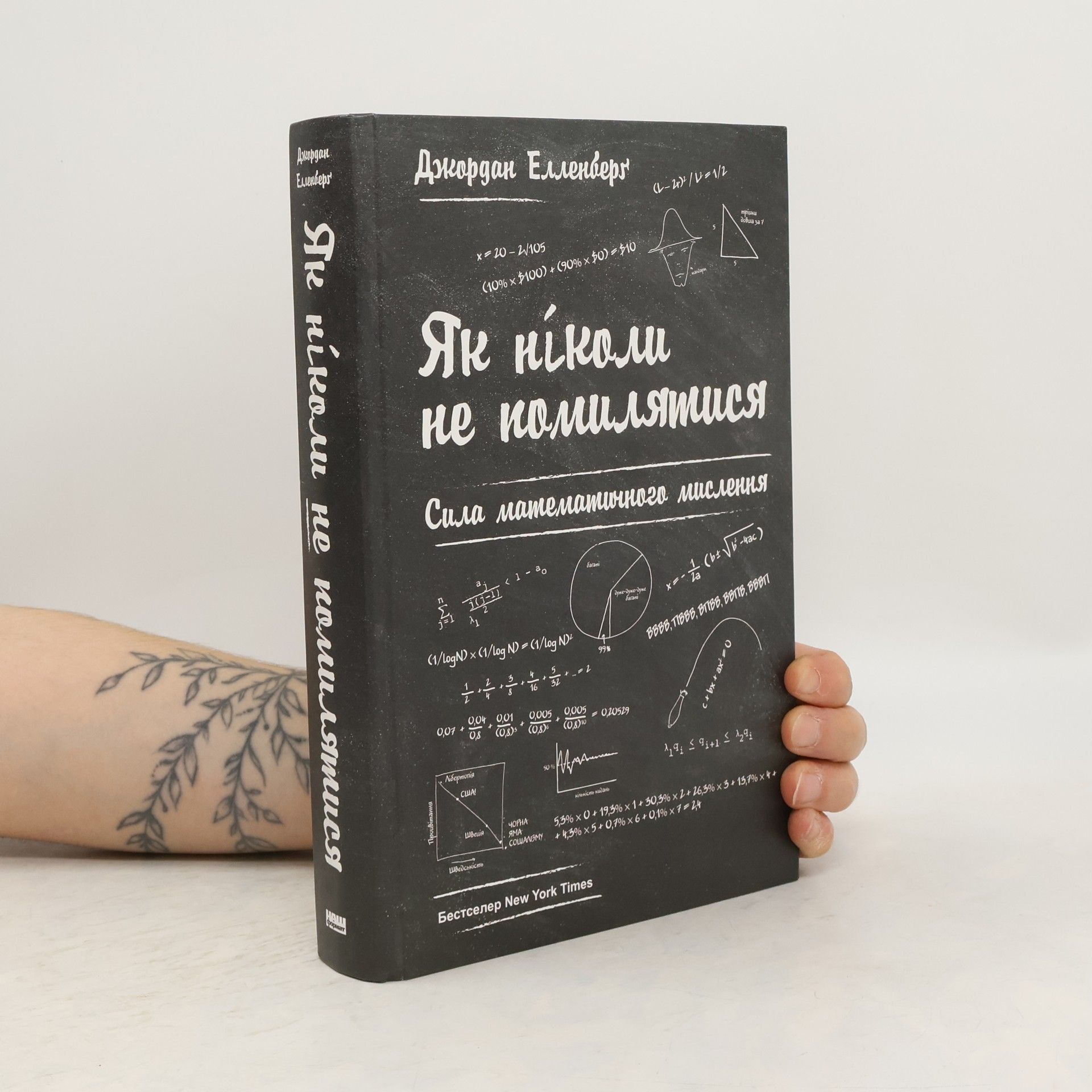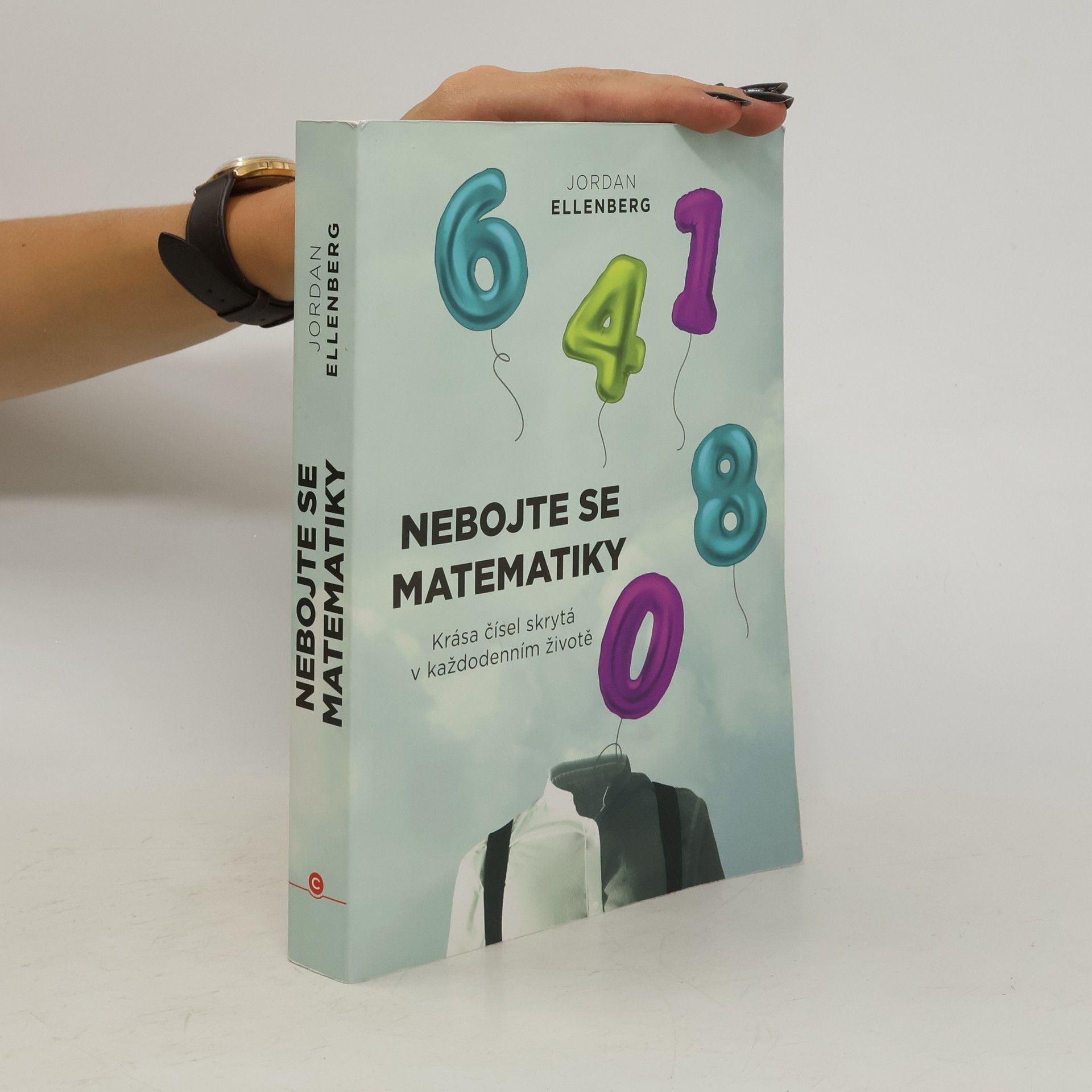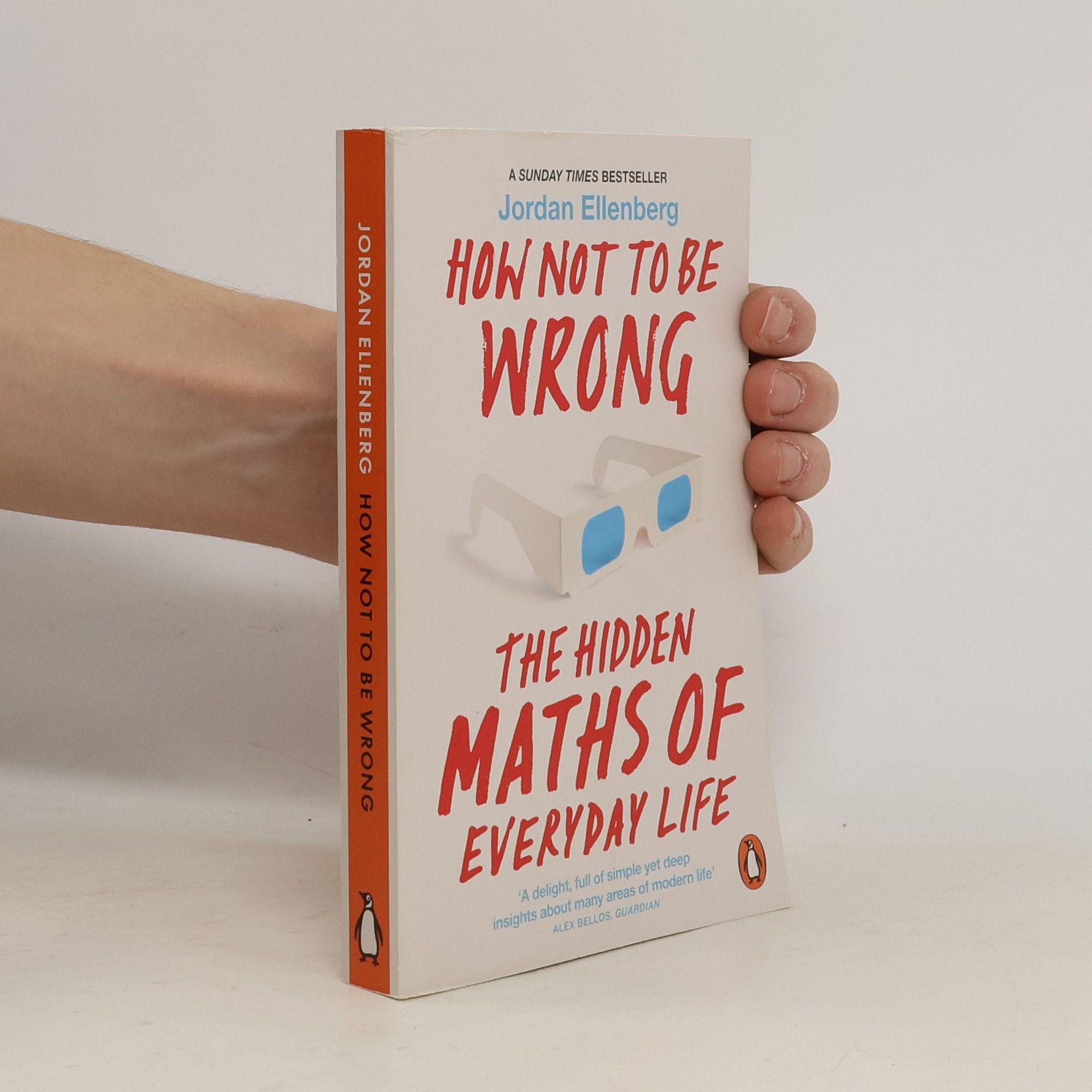The maths we learn in school can seem like an abstract set of rules, laid down by the ancients and not to be questioned. In fact, Jordan Ellenberg shows us, maths touches on everything we do, and a little mathematical knowledge reveals the hidden structures that lie beneath the world's messy and chaotic surface. In How Not to be Wrong, Ellenberg explores the mathematician's method of analyzing life, from the everyday to the cosmic, showing us which numbers to defend, which ones to ignore, and when to change the equation entirely. Along the way, he explains calculus in a single page, describes G del's theorem using only one-syllable words, and reveals how early you actually need to get to the airport.
Jordan Ellenberg Boeken







How not to be wrong : the power of mathematical thinking
- 468bladzijden
- 17 uur lezen
A brilliant tour of mathematical thought and a guide to becoming a better thinker, How Not to Be Wrong shows that math is not just a long list of rules to be learned and carried out by rote. Math touches everything we do; It's what makes the world make sense. Using the mathematician's methods and hard-won insights-minus the jargon-professor and popular columnist Jordan Ellenberg guides general readers through his ideas with rigor and lively irreverence, infusing everything from election results to baseball to the existence of God and the psychology of slime molds with a heightened sense of clarity and wonder. Armed with the tools of mathematics, we can see the hidden structures beneath the messy and chaotic surface of our daily lives. How Not to Be Wrong shows us how--Publisher's description.
"Shape reveals the geometry underneath some of the most important scientific, political, and philosophical problems we face. Geometry asks: Where are things? Which things are near each other? How can you get from one thing to another thing? Those are important questions. Geometry doesn't just measure the world--it explains it. Shape shows us how"--
Shape reveals the geometry underneath some of the most important scientific, political, and philosophical problems we face. Geometry asks: Where are things? Which things are near each other? How can you get from one thing to another thing? Those are important questions. Geometry doesn't just measure the world-it explains it. Shape shows us how
Nebojte se matematiky
- 432bladzijden
- 16 uur lezen
Matematika na školách vypadá většinou jako soubor abstraktních pravidel, která vymyslel někdo hodně dávno před námi a kterým dnes rozumí sotva vyučující. Autor humorným způsobem analyzuje obyčejný život a ukazuje, která čísla jsou opravdu důležitá, která můžeme zapomenout už ve školních lavicích a také, kdy je potřeba úplně změnit rovnici. Prakticky se dozvíte např. proč mají vysocí rodiče malé děti, anebo kdy přijít na letiště, abyste dlouho nečekali, ale zase aby vám letadlo neuletělo. (Nakladatelská anotace)
Shape
Die verborgene Geometrie von Biologie, Strategie, Demokratie und eigentlich absolut allem
Die meisten Menschen erinnern sich an Geometrie als sterile Übungen im Staub der neunten Klasse. Eine obskure Reihe von seltsamen Schritten zu noch unverständlicheren Beweisführungen, nur um eine Tatsache über Dreiecke zu zeigen, die von vornherein klar war. Und doch ist das nur ein winziger Teil der eigentlichen Geometrie. Jordan Ellenberg – einer der führenden Mathematiker unserer Zeit – offenbart in »Shape«, dass es die Geometrie ist, die hinter einigen der wichtigsten wissenschaftlichen, politischen und philosophischen Probleme steckt, denen wir gegenüberstehen: Wie sollte eine Demokratie ihre Vertreter wählen? Wie kann man verhindern, dass eine Pandemie die Welt überschwemmt? Wie lernen Computer? Können antike griechische Proportionen den Aktienmarkt vorhersagen? Was sollten Kinder in der Schule lernen, wenn sie wirklich denken lernen wollen? Alles Fragen zur Geometrie. Denn schon das Wort »Geometrie« kommt aus dem Griechischen und bedeutet »Vermessung der Welt«. Und selbst das ist eine Untertreibung: Denn die Geometrie misst die Welt nicht nur, sie erklärt sie auch. Jordan Ellenbergs Blickwinkel auf die Welt bietet eine radikal andere Perspektive auf die verborgene Geometrie hinter Biologie, Strategie, Information, Demokratie – und eigentlich absolut allem.
Nos âmes perdues
- 539bladzijden
- 19 uur lezen

